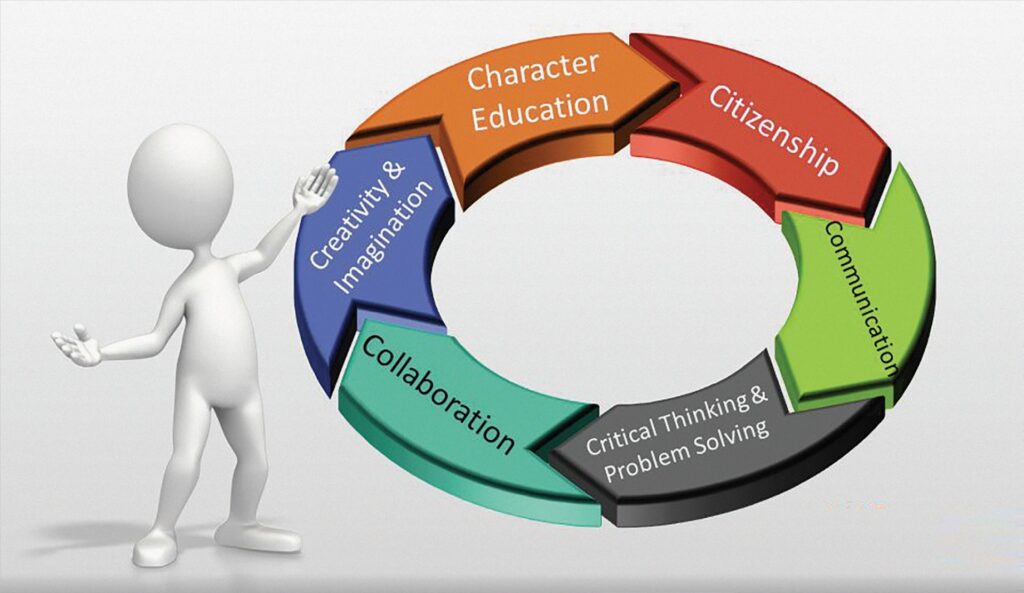In underdeveloped economies, the pursuit of growth is essential, but it must be sustainable and impactful.

In today’s fast-paced and ever-changing business landscape, it’s crucial for organizations to have a clear sense of direction and alignment among team members. Objectives and Key Results, or OKRs, have emerged as a powerful tool to shape the course of organizations and ensure that everyone is on the same page when it comes to what matters most. In this article, we will explore the concept of OKRs, provide strong cases and examples, and explain how they simplify complex strategies to make them understandable to everyone.
What are OKRs?
Objectives and Key Results are a goal-setting framework that originated at Intel in the 1970s and gained widespread popularity thanks to the adoption by the tech company Google in the early 2000s. The core idea behind OKRs is to set clear and measurable objectives and the key results that define the achievement of those objectives. OKRs are typically set on a quarterly or annual basis and are meant to be challenging yet achievable.
 Case 1: Google’s Explosive Growth
Case 1: Google’s Explosive Growth
One of the most famous examples of OKRs in action is Google. Google’s founders, Larry Page and Sergey Brin, recognized the need for a focused and aligned workforce as the company grew rapidly. By implementing OKRs, they were able to set clear objectives such as “Improve the quality of search results” and define key results like “Reduce average query processing time by 20 percent.”
This approach helped Google maintain a sense of purpose and direction as it expanded into various markets and services. Every team and individual at Google could relate their work to these high-level objectives, which made the company’s strategic vision accessible and understandable to all employees.
Case 2: Spotify’s Agile Transformation
The music streaming giant Spotify is another remarkable example of OKRs transforming an organization. As Spotify grew, it faced challenges in scaling its agile development practices while keeping teams aligned. To overcome this, they implemented a system of OKRs that bridged the gap between individual teams and the company’s overarching goals.
For instance, one of Spotify’s objectives was to “Enhance User Experience.” Key results included metrics like “Increase the number of songs in personalized playlists” and “Reduce the app’s load time.” This approach allowed different teams working on user interface, backend infrastructure, and recommendation algorithms to see how their work contributed to the company’s broader mission.
Simplicity and Clarity
One of the most compelling aspects of OKRs is their simplicity and clarity. Unlike traditional strategic plans that can be lengthy and convoluted, OKRs distill complex strategies into a few clear and measurable objectives. This simplicity helps everyone in the organization understand what needs to be achieved and how their work connects to these objectives.
Case 3: Airbnb’s Cultural Transformation
Airbnb, a disruptor in the hospitality industry, went through a significant cultural transformation using OKRs. They shifted from a primarily engineering-focused culture to a more customer-centric one. To do this, Airbnb set objectives like “Create memorable travel experiences” and key results like “Achieve a 30 percent increase in the number of five-star reviews from guests.”
By simplifying its mission and focusing on specific, measurable outcomes, Airbnb was able to align its teams and shift its culture towards delivering exceptional experiences for travelers.
In the global context of business, Objectives and Key Results (OKRs) are not just a framework for success; they are a pathway to transformation. Let’s explore how OKRs can serve as a potent tool for organizations in underdeveloped countries like Nepal, helping them build world-class institutions. Through case illustrations, we will demonstrate how OKRs can bridge the gap between aspiration and achievement, catalyzing progress in Nepal’s business landscape.
Aligning Vision with Action
Nepal, with its rich culture and breathtaking landscapes, holds enormous potential for various industries, including tourism and agriculture. However, often, there’s a gap between the grand vision and practical execution. OKRs can help Nepali companies bridge this divide. A Nepali eco-tourism startup sets an objective to “promote sustainable tourism in remote villages.” Key results include “establish partnerships with local communities in 5 remote villages” and “increase revenue from eco-tourism by 30 percent.” Through these clear and measurable targets, the company aligns its vision of responsible tourism with actionable steps.
Focus on Impactful Growth
In underdeveloped economies, the pursuit of growth is essential, but it must be sustainable and impactful. OKRs enable organizations to prioritize objectives that drive real change.
A Nepali agricultural cooperative aims to “improve farmers’ income and food security.” Key results include “train 500 farmers in modern farming techniques” and “increase the yield of staple crops by 20 percent.” By focusing on these key results, the cooperative ensures that growth not only benefits the organization but also empowers local farmers.
Adaptive Strategy
Nepal’s business environment can be unpredictable, with challenges ranging from political instability to natural disasters. OKRs promote adaptability by allowing organizations to adjust their objectives and key results regularly.
A Nepali microfinance institution sets an initial objective to “provide financial inclusion to underserved communities.” However, after a major earthquake disrupts operations, they adapt their OKRs to “emergency relief and rehabilitation in affected regions.” This flexibility ensures the institution remains responsive to the needs of the community.
Empowering the Workforce
Building world-class organizations in Nepal requires a motivated and engaged workforce. OKRs provide a sense of purpose and clarity, motivating employees to contribute their best.
A Nepali tech startup sets an objective to “develop innovative solutions for local challenges.” Key results include “conduct weekly ideation sessions” and “implement one new technology solution every quarter.” This approach fosters innovation and empowers local talent to tackle Nepal’s unique problems.
Measuring Success Transparently
Transparency and accountability are essential for growth. OKRs encourage organizations to measure and communicate their progress openly, fostering trust among stakeholders.
A Nepali non-profit organization working on education sets an objective to “Improve Literacy Rates in Rural Schools.” Key results include “conduct baseline literacy assessments” and “increase the literacy rate by 15 percent in target schools.” By regularly sharing these results with donors and the community, the organization builds trust and attracts more support.
Conclusion
In Nepal and other underdeveloped countries, OKRs are not just a management tool; they are a catalyst for progress. By aligning vision with action, focusing on impactful growth, adapting to challenges, empowering the workforce, and measuring success transparently, OKRs can empower Nepali companies to build world-class organizations.
Through the illustrations provided, we’ve seen how OKRs can drive change in various sectors, from eco-tourism to microfinance and education. As Nepal continues its journey toward development, OKRs offer a roadmap that ensures businesses and organizations can effectively navigate the unique challenges and opportunities that this beautiful Himalayan nation presents. In doing so, they can contribute to the growth and prosperity of the nation while also creating a better future for their communities.
Kandel is the Deputy CEO of Sanima Reliance Life Insurance.


